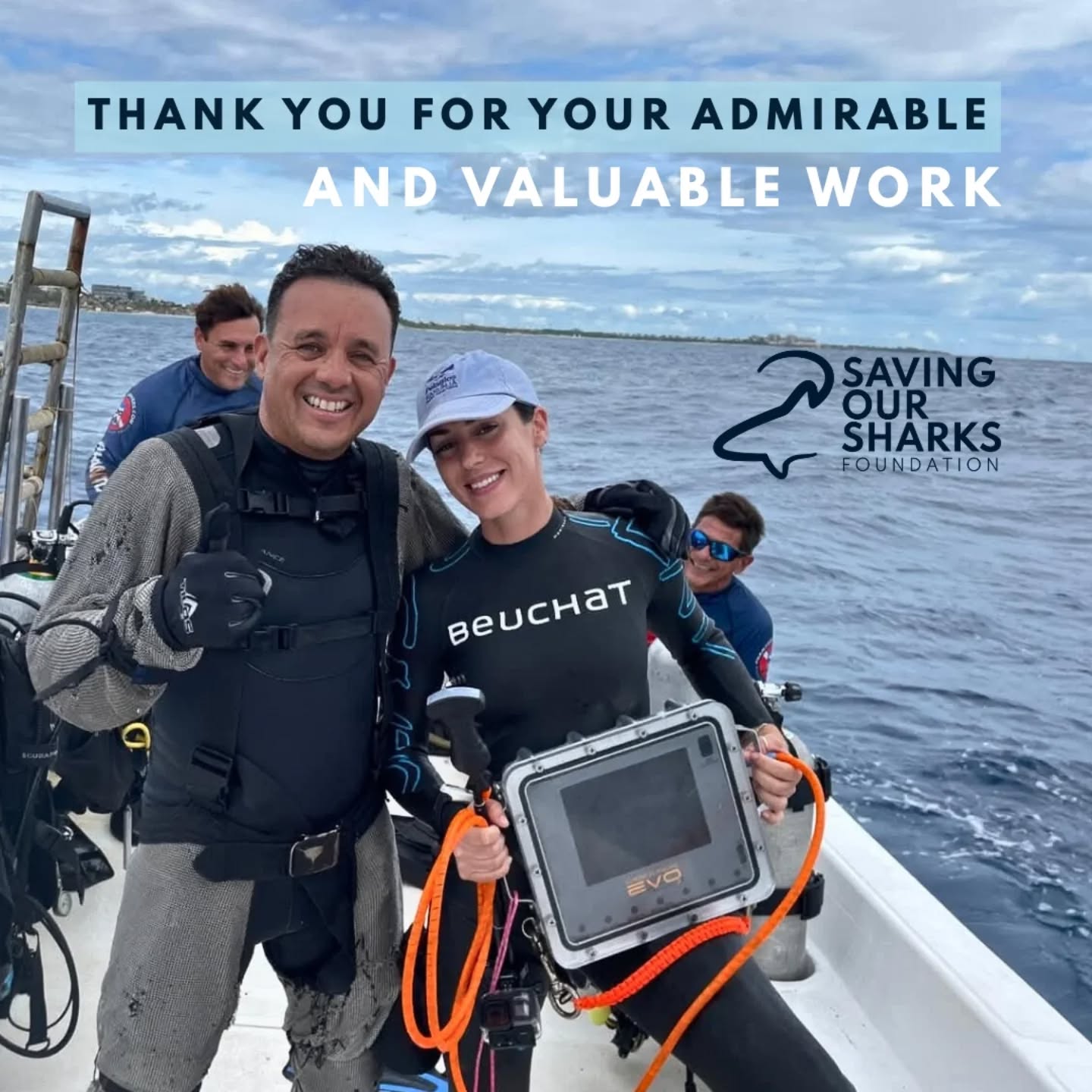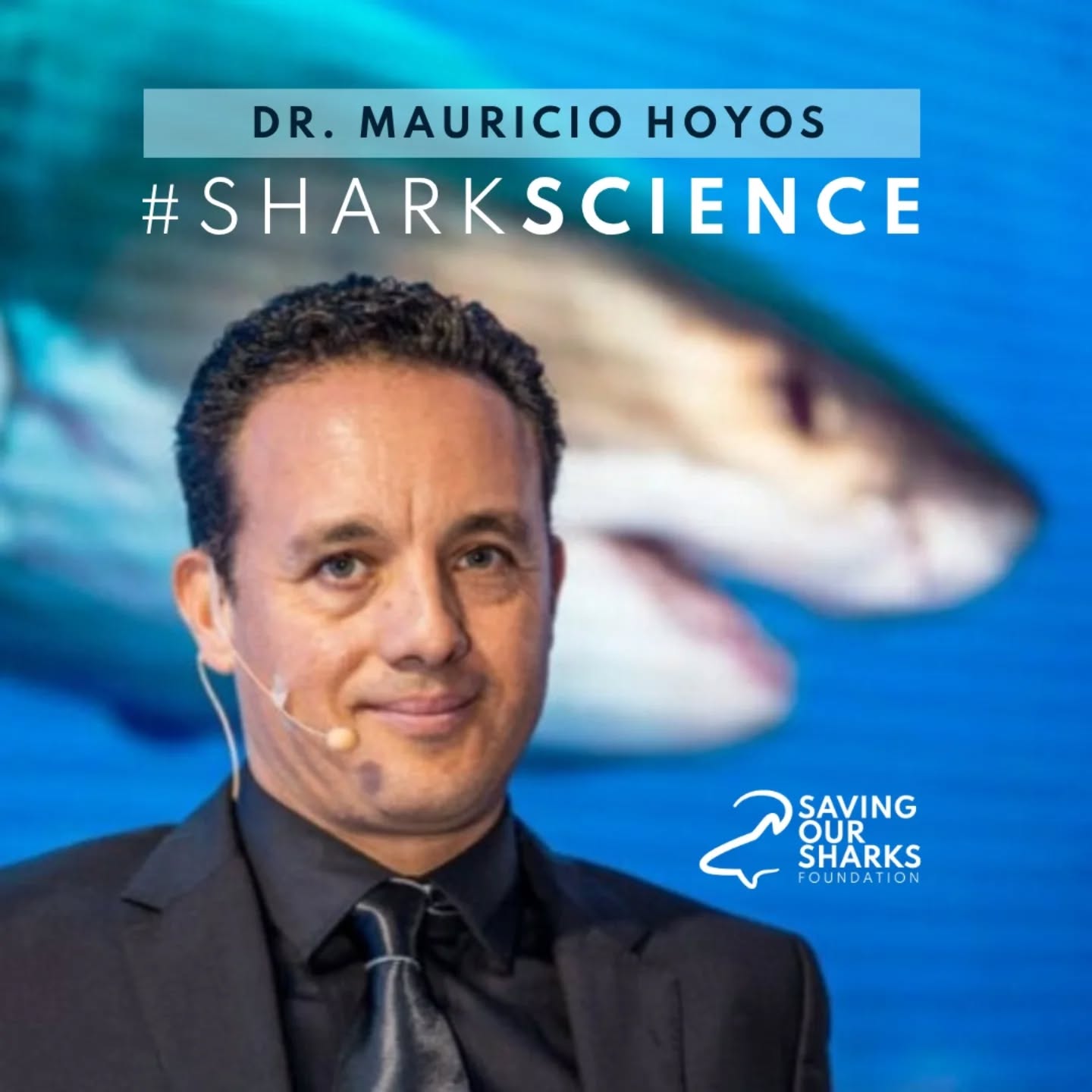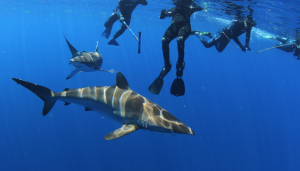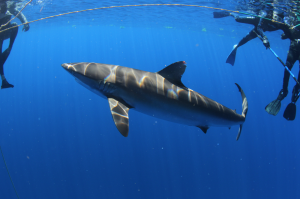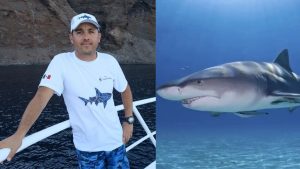
Dr. Mauricio Hoyos and his shark encounter that reaffirms our conservation mission
- Cris Lopez
Dr. Mauricio Hoyos, Director of Pelagios Kakunjá, founder and board member of the Fundación Saving Our Sharks, is one of the most recognized figures in shark research worldwide. His work has been instrumental in understanding key aspects of these species, including breeding and reproductive zones, migratory patterns, behavior, and habitat use. He is also deeply committed to sharing knowledge and mentoring new generations of scientists and ocean advocates.
During his recent scientific expedition focused on shark tagging in Cocos Island, Costa Rica—a technique that involves implanting transmitters to track sharks’ movements and study their migratory patterns—Dr. Hoyos experienced an unexpected encounter that tested not only his expertise but also his perspective on these animals. With over 2,000 sharks tagged throughout his career, his training and composure were crucial in handling the moment with clarity. Yet, what stood out most was his ability to transform the incident into an opportunity to challenge deeply rooted myths. Rather than an aggressive response, Dr. Hoyos described the shark’s behavior as restrained, almost as if it had chosen not to harm him. “It spared my life,” he stated, reinforcing the idea that sharks are not inherently killers but sentient creatures deserving of respect and understanding.
At the Saving Our Sharks Foundation, we believe that shark encounters like this—far from being defined solely by their dramatic nature—can inspire profound reflection and provide valuable insights for science, environmental education, and shark conservation worldwide.
What This Encounter Teaches Us
Sharks are not “killers”: As Dr. Hoyos points out, the aggressive shark archetype is fundamentally flawed. This experience underscores that when sharks react, it is often out of self-defense—as was the case here—rather than due to a predatory instinct.
The importance of tagging and tracking migrations: The encounter occurred during the process of placing transmitters that emit ultrasonic signals, providing critical data on when a shark enters or leaves a particular area and where it migrates. This technology enables researchers to map underwater corridors that extend beyond national borders, supporting a more global, coordinated approach to conservation.
A reminder of our vulnerability—and their vital role: Through his experience, Dr. Hoyos emphasizes that sharks have existed for approximately 450 million years, and it is we who have “invaded” their habitat. Sharks serve a vital ecological function as “the immune system of the oceans”: feeding on dead, diseased, or weak organisms and thereby contributing to ecological balance. This encounter invites us to pause the “shark = monster” narrative and adopt a stance of respect and stewardship.
What this means for our work at the Saving our Sharks Foundation
Strengthening public awareness: Stories like this help shift public perception and reinforce the message that sharks deserve protection, not fear.
Supporting cross-border conservation policies: The data collected from expeditions like Dr. Hoyos’s can inform proposals for marine protected areas that consider sharks’ migratory routes.
Encouraging scientific collaboration: When researchers from different countries—such as Costa Rica, Mexico, and the United States—work together, they create a stronger, more unified knowledge base.
Reinforcing the need for training and preparedness: Dr. Hoyos’s experience shows that expert conduct in high-risk situations is essential for minimizing danger and ensuring effective outcomes.
Looking Ahead
Dr. Mauricio Hoyos’s encounter with a shark in Cocos Island is not just a dramatic anecdote—it is a turning point that allows us to recalibrate our approach: less fear, more understanding. We must dismantle the myth of the killer shark, because reality tells a different story.
This episode should not fade into obscurity—it must serve as a catalyst for greater action, stronger alliances, and deeper respect for sharks and the ocean as a whole.
At the Saving Our Sharks Foundation, we are honored and grateful to have Dr. Mauricio Hoyos as part of this conservation journey. Together, we are transforming lives by saving sharks!
Share This Post
Apoya a los Maestros del Mar a crear un futuro donde pescadores se convierten en protectores de los tiburones.


